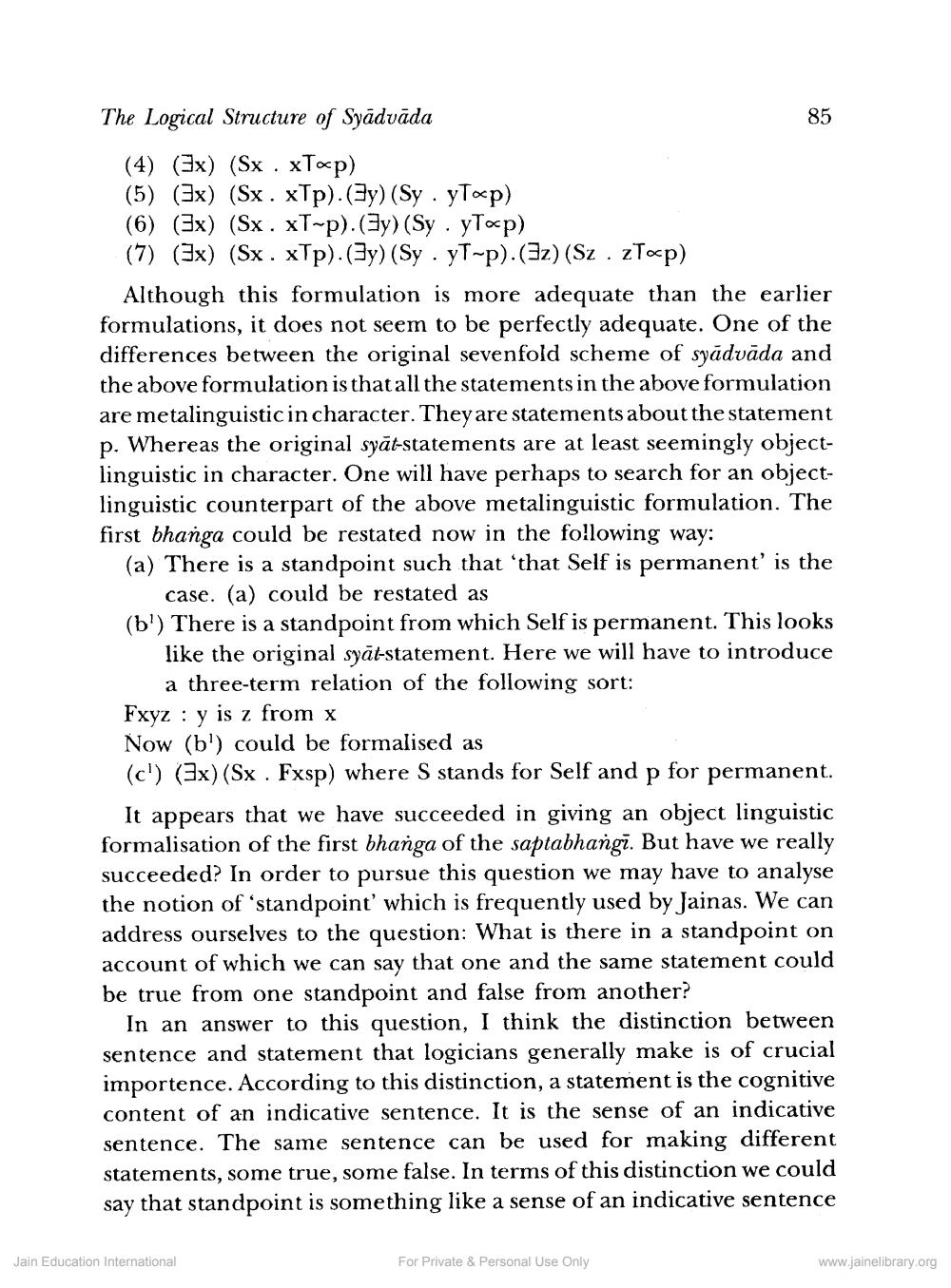________________
85
ject
The Logical Structure of Syādvāda
(4) (3x) (Sx. xTap) (5) (3x) (Sx. xTp). (Ey) (Sy · yT«p) (6) (3x) (Sx. XT-p). (Sy) (SyyTap) (7) (3x) (Sx. xTp). (By) (Sy . yt-p).(az) (Sz . zTap) Although this formulation is more adequate than the earlier formulations, it does not seem to be perfectly adequate. One of the differences between the original sevenfold scheme of syādvāda and the above formulation is that all the statements in the above formulation are metalinguisticin character. They are statements about the statement p. Whereas the original syāt-statements are at least seemingly objectlinguistic in character. One will have perhaps to search for an linguistic counterpart of the above metalinguistic formulation. The first bhanga could be restated now in the following way: (a) There is a standpoint such that 'that Self is permanent is the
case. (a) could be restated as (b') There is a standpoint from which Self is permanent. This looks
like the original syāt-statement. Here we will have to introduce
a three-term relation of the following sort: Fxyz : y is z from x Now (b') could be formalised as (c') (3x) (Sx. Fxsp) where S stands for Self and p for permanent.
It appears that we have succeeded in giving an object linguistic formalisation of the first bhanga of the saptabhangi. But have we really succeeded? In order to pursue this question we may have to analyse the notion of 'standpoint' which is frequently used by Jainas. We can address ourselves to the question: What is there in a standpoint on account of which we can say that one and the same statement could be true from one standpoint and false from another?
In an answer to this question, I think the distinction between sentence and statement that logicians generally make is of crucial importence. According to this distinction, a statement is the cognitive content of an indicative sentence. It is the sense of an indicative sentence. The same sentence can be used for making different statements, some true, some false. In terms of this distinction we could say that standpoint is something like a sense of an indicative sentence
Jain Education International
For Private & Personal Use Only
www.jainelibrary.org




